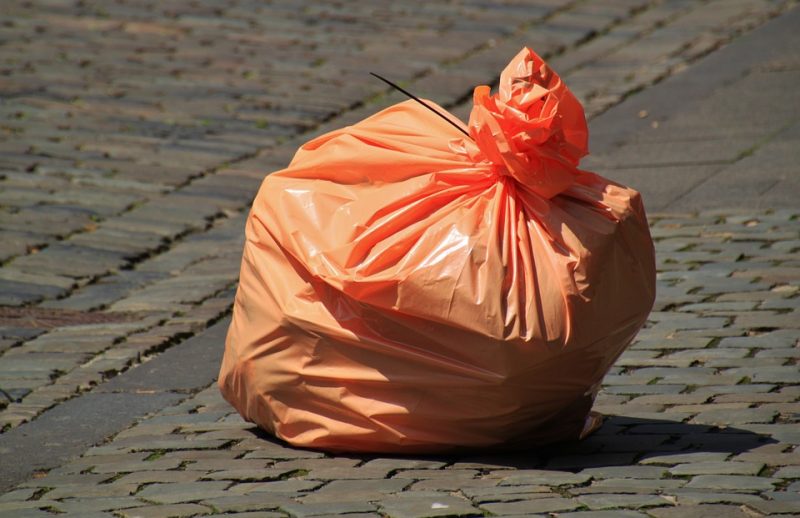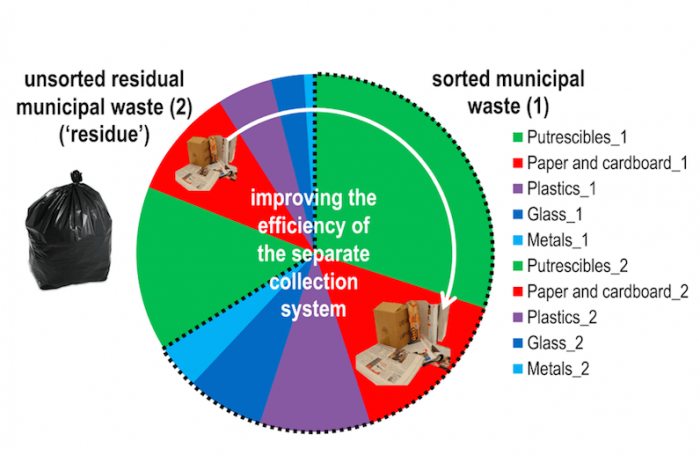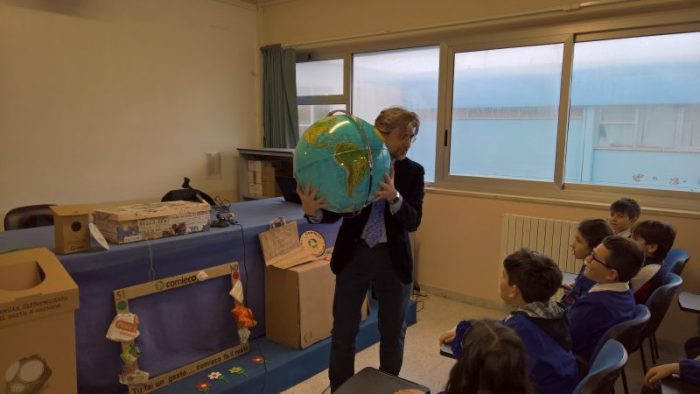
Municipal solid waste (MSW) is the waste that we produce in our home. It is mainly composed of putrescible and many recyclable materials, such as paper and cardboard, plastic, glass, aluminum, steel, and wood. The source-separation of MSW is used all over the world as a method to recover materials as well as to reduce environmental impacts. In fact, if those materials are not separated, collected and sent to recycling, they end up into landfills and incinerators.
In our recent study titled, “Improving the efficacy of municipal solid waste collection with a communicative approach based on easily understandable indicators,” published in the journal Science of the Total Environment, we propose a useful methodological approach to define easily understandable indicators to use in communication campaigns organized to improve the efficacy of MSW separate collection.

Image published with permission from Giovanni De Feo
The adopted approach combines Life Cycle Thinking and Environmental Communication to obtain practical results by defining indicators to use as citizens’ levers.
Life Cycle Thinking
Life Cycle Thinking is an innovative way to look at the things around us, thinking about what they were and what they will become. For example, we can consider a newspaper that we have just finished reading. What it was at its origin, when it was a “baby”? Yes, it was a tree. Now, if we correctly separate it, the newspaper could become, for instance, part of a cardboard, and so on. Life Cycle Thinking takes into consideration the sequence of raw material extraction, manufacturing, distribution, use, and disposal, which is indeed its life cycle. From this point of view, what we consider the weight of an object is not correct, because it should contain all the materials (and energy) used in its entire life cycle.
Environmental Communication and the innovative approach
The “Internet world” is characterized by an abundance of environmental information. However, information by itself does not solve problems. Only information converted into meaningful and understandable knowledge can be a resource useful for improving sustainability and environmental quality.
“Greenopoli” is an innovative communicative approach adopted for this research. Greenopoli is a website, a Facebook page, a teaching method, and an environmental education program.
An image search on an Internet search engine can give an idea of the communicative impact of the method. There are two main keywords in Greenopoli: sharing and sustainability. A lot of funny characters, such as Mr. Error, Inspector Garbage, and Mr. Rubbish, together with green fairy tales, rap songs (“green raps”), and games are the main tools used during the environmental education meetings managed by Greenopoli for adults and children.
Greenopoli assumes that school is the starting point to obtain a change of mindset because speaking with students (all potential communicators) means indirectly communicating with all the other targets.

Image published with permission from Giovanni De Feo
An example of the indicators
Recyclable materials that go into the unsorted residual waste lead to economic damage as well as environmental impact due to the loss of environmental benefits of recycling and the impacts of disposal. Therefore, it is very important to convince citizens to correctly separate MSW items, making sure that they do not go into the unsorted residual municipal waste by mistake. The idea is to communicate to all citizens the economic value of the “urban mining” present in the unsorted residual waste and that putting waste into a landfill is a wrong or absent source separation of MSW. It is known that money is able to change people’s motivation and their behavior.
Health is another important social lever. For this purpose, a specific indicator was developed in terms of years of life lost and the number of years lived disabled (DALYs), as proposed by the World Bank and WHO (Disability Adjusted Life Years).
The proposed indicators allow us to obtain several combinations within communications that can follow many channels such as road signs with posters, brochures to be distributed at training and awareness events, TV spots, radio messages, social network, etc.
A case example
As a case example, this methodology was applied to a collection of paper and cardboard in twelve Southern Italy cities and obtained very promising results. Just to give an idea, the maximum quantity of paper and cardboard recoverable from the unsorted waste would allow Naples (in the Campania region) and Palermo (in Sicily) to recover more than fifteen million Euros. The maximum potential economic saving for each citizen would be twenty-five Euros per capita. The economic savings obtained for Naples and Palermo could be translated to more than one thousand positions as young environmental communicators in areas with a high level of youth unemployment. In the city of Catania (in Sicily), a citizen could recover more than sixty kilograms of carbon dioxide equivalent in terms of global warming from the paper and cardboard placed into the unsorted residual waste. Moreover, the same citizen could benefit from a hypothetical per capita “life-time recovery” of almost an hour.
Economic and health aspects could allow increased communication efficacy as in the next message example developed for the city of Naples: “Dear citizens of Naples, if you collected all your paper and paperboard which today is thrown away, you may save for your beautiful city something like 17,760,548 Euro, i.e. 18 Euro of saving for you! With your act, you would also avoid producing 45 kilograms of carbon dioxide, and you might give yourself 41minutes of good health: think about it!”
These findings are described in the article entitled Improving the efficacy of municipal solid waste collection with a communicative approach based on easily understandable indicators, recently published in the journal Science of the Total Environment. This work was conducted by G. De Feo, C. Ferrara, and V. Iannone from the University of Salerno, and P. Parente from NaturalMente.









